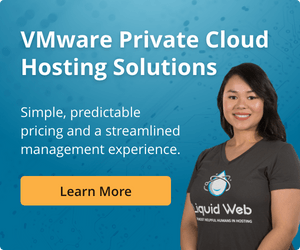What is enterprise hybrid cloud, and how does it work?
With an enterprise hybrid cloud, organizations can leverage the scalability and cost-effectiveness of public cloud services while retaining control over their data and applications in a private cloud environment. It’s designed to meet all an enterprise business’s cloud computing requirements, eliminating the need to make tradeoffs.
It comes as no surprise, then, that 73% of enterprises are using a hybrid cloud approach in 2024, and many more will likely follow suit.
However, what is an enterprise hybrid cloud, and how can it be implemented?
In this guide, we’ll explore the benefits and challenges of enterprise hybrid cloud computing and look at how to establish a thriving hybrid cloud environment for your business.
What is an enterprise hybrid cloud?
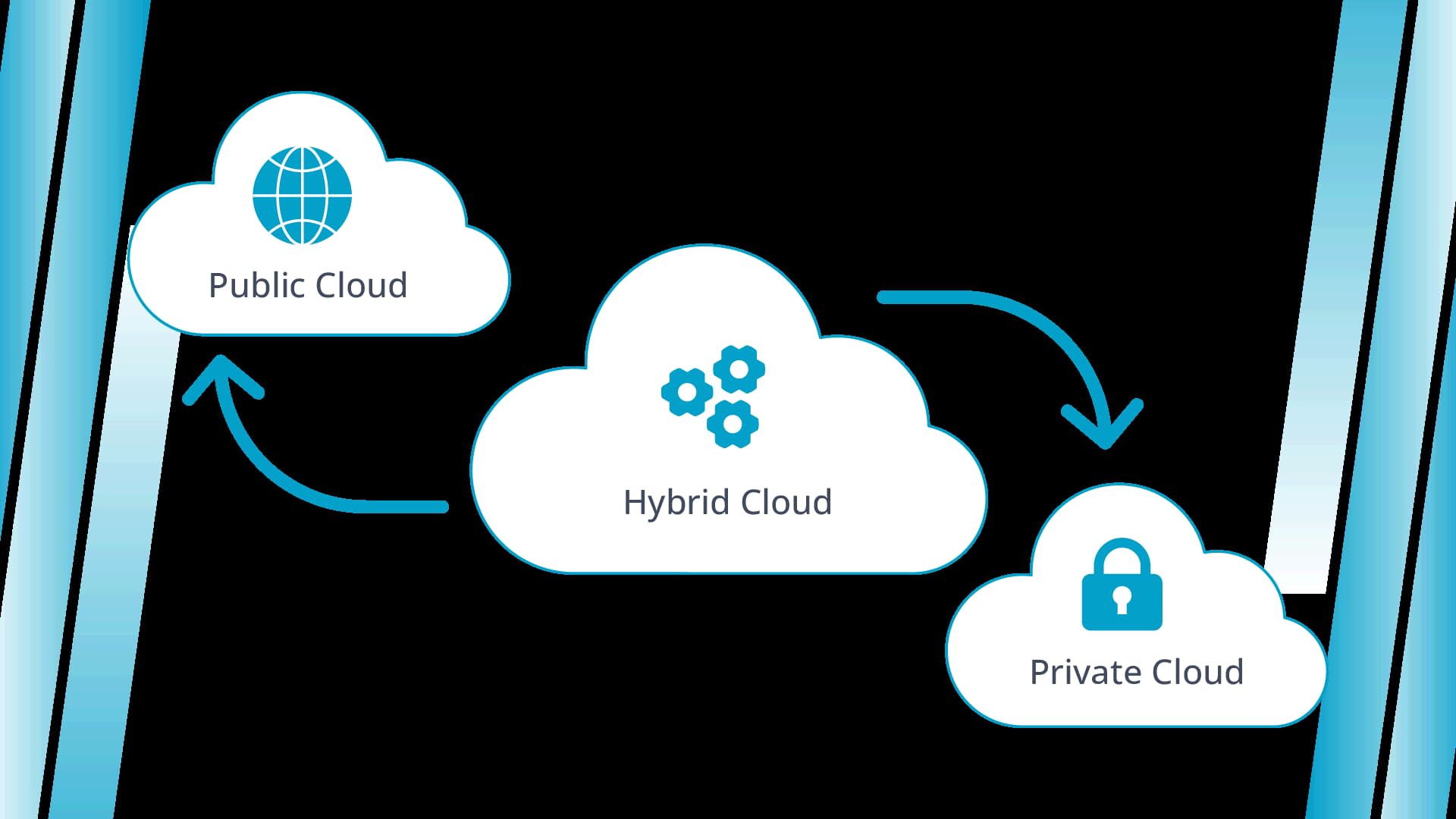
An enterprise hybrid cloud is a mix of two or more data storage and computing environments, such as a public cloud, third-party-hosted private cloud, or on-premises infrastructure. It combines these different environments to create a unified platform for an enterprise organization’s computing data.
That makes it an excellent option for enterprises looking to leverage the best features of multiple infrastructure models. After all, there’s no such thing as the perfect cloud solution.
Hybrid clouds can be tailored to meet your needs and requirements. You can choose the best computing model for each workload and application based on factors like cost, regulatory compliance, security, and performance.
Siemens is a great example of an enterprise using a hybrid cloud to its advantage. It collaborated with Red Hat and IBM to develop a hybrid cloud program for its Internet of Things (IoT) solution that offers manufacturers and plant operators real-time insights into their operations.
Understanding your business requirements, securing your data, and selecting the right mix of public and private cloud resources are all necessary components of creating a hybrid cloud strategy for your enterprise.
Having the necessary skill set to manage and monitor the environment effectively is also crucial unless you choose to go with fully managed cloud services.
Overall, if you want to maintain control over your data while taking advantage of cost-effective public cloud resources, an enterprise hybrid cloud could be exactly what you need.
Private and public clouds
A private cloud refers to a computing environment that’s solely reserved for a single user or organization. It includes dedicated server resources, customizable infrastructure, and a higher level of security compared to public cloud services. Private clouds are especially beneficial for businesses that need to meet stringent compliance requirements.
A major drawback that comes with a private cloud is the price, as it requires a substantial investment in hardware and labor upfront.
Public clouds are owned and operated by a third-party provider. With this type of cloud, computing resources are accessible to multiple users over the internet. Companies can leverage nearly limitless scaling capabilities with public clouds. In addition, users don’t have to worry about managing the resources themselves, as the cloud provider generally handles it.
Since public clouds are shared environments, their drawbacks include limited control, potential security issues, and fewer customization options.
By leveraging the strengths of both private and public clouds, you can unlock a host of benefits for your business.
Why choose an enterprise hybrid cloud?
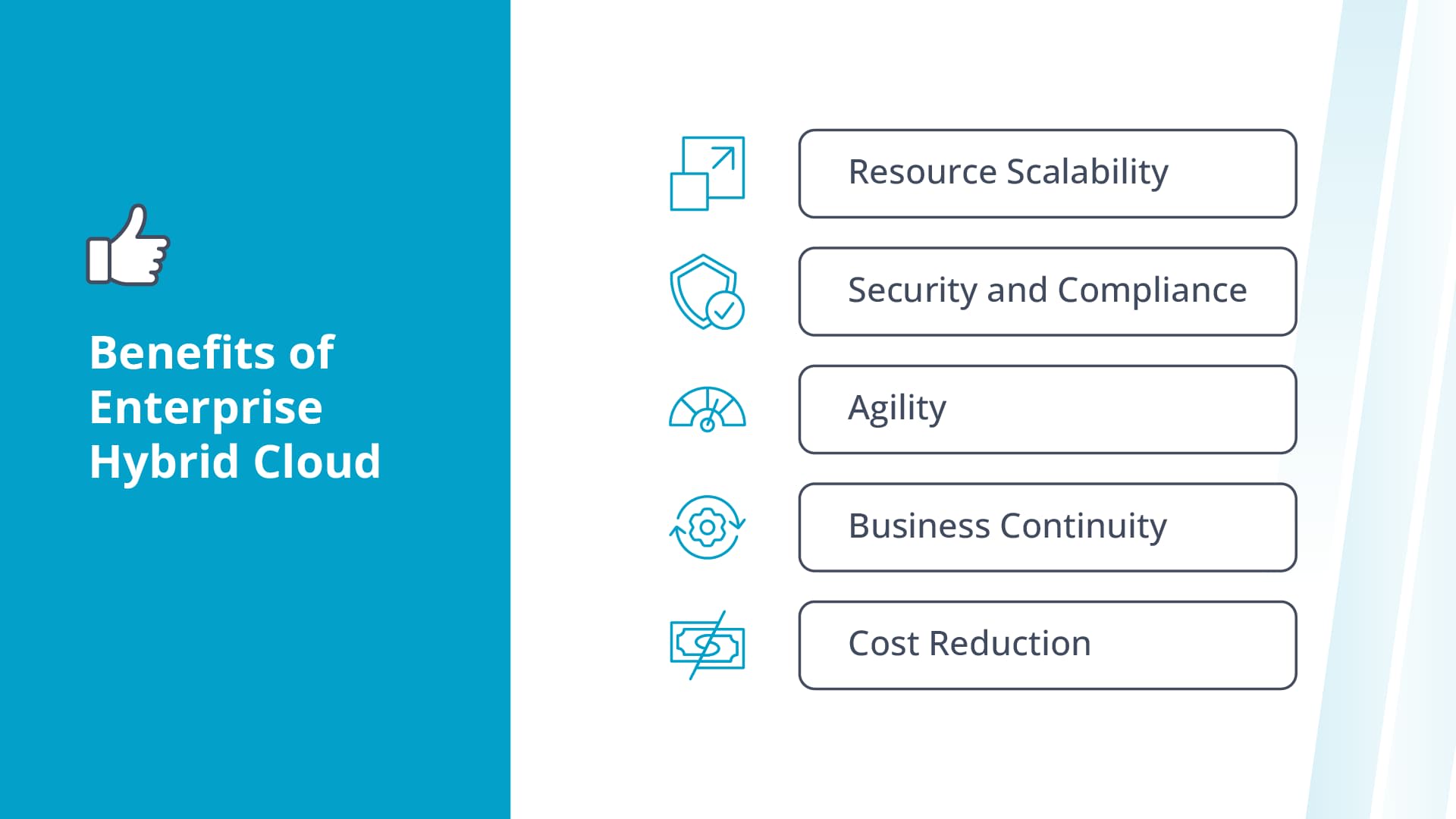
An enterprise hybrid cloud model offers numerous benefits to enterprise organizations. It’s no wonder that hybrid clouds have gained immense popularity in recent years. Let’s explore some of the most significant advantages:
Resource scalability
A hybrid cloud environment comes with on-demand scalability — you can scale IT resources up and down as needed without incurring unnecessary costs. This is in part because established public cloud platforms, like Amazon Web Services (AWS), Microsoft Azure, and Google Cloud, include copious amounts of capacity. As a result, certain operations can be moved to the public cloud to meet spikes in demand.
And at Liquid Web, our cloud dedicated servers offer resource isolation while providing you with the instant provisioning and flexibility of the cloud. As such, you can scale at any time to ensure peak performance regardless of how much traffic you receive.
Overall, with an enterprise hybrid cloud setup, you can maintain optimal performance and adapt quickly to changing needs without any hassle.
Security and compliance
There are higher levels of security in enterprise hybrid clouds. This is because a private cloud or on-premises infrastructure gives you complete control over your data and can host critical and highly sensitive information, such as intellectual property, health care, and financial data.
In short, sensitive data and workloads that require heightened security can benefit from a private cloud’s protection. You can then use a public cloud ecosystem to house less sensitive operations.
It’s worth noting that security in the public cloud is a shared responsibility between you and your vendor. So, it’s important to know what cloud security measures are provided and what you need to do to safeguard your own data.
On the other hand, many private clouds give you the flexibility to implement the security controls that best suit your needs, like access controls, encryption, and an intrusion detection system (IDS).
Lastly, a private cloud can help you meet applicable industry-specific or regional compliance standards, like the:
Noncompliance can result in hefty fines and legal repercussions, not to mention reputational damage and financial losses.
Agility
With an enterprise hybrid cloud architecture, you can accelerate your time to market by using your public infrastructure for testing and deployment. What this means is that a public cloud offers greater agility than a private cloud. Your developers can quickly spin up additional resources to test new apps so you can get your product to market faster. A faster time to market can also help you gain a competitive edge.
As soon as the application proves its value or moves into production, it can be moved to a private cloud for better security and control.
Business continuity
Another key advantage of an enterprise hybrid cloud is the ability to maintain business continuity and support your disaster recovery plan. You can replicate data and apps across both private and public clouds.
So, if one cloud service goes down or a disaster occurs, the other can spring into action. As a result, you can continue to operate without any interruptions.
Cost reduction
A private cloud-only approach can be costly for enterprise businesses as it typically requires significant upfront investments in hardware, software, network infrastructure, and labor. You may also be responsible for hardware management tasks and maintenance.
You can mitigate these expenses by supplementing third-party private or on-premises infrastructure with public cloud services. For example, you can achieve cost savings by shifting some of your operations to a public cloud environment.
Moreover, you’ll be able to scale operations without investing in additional equipment and only pay for the resources you consume with a public cloud’s pay-as-you-go pricing model.
In addition, Liquid Web’s VMware private cloud includes simple resource-based pricing. This allows you to purchase only the resources you need for your hybrid setup without adding additional hardware.
On the whole, a combination of private and public cloud systems can result in a lower total cost of ownership.
Challenges of an enterprise hybrid cloud
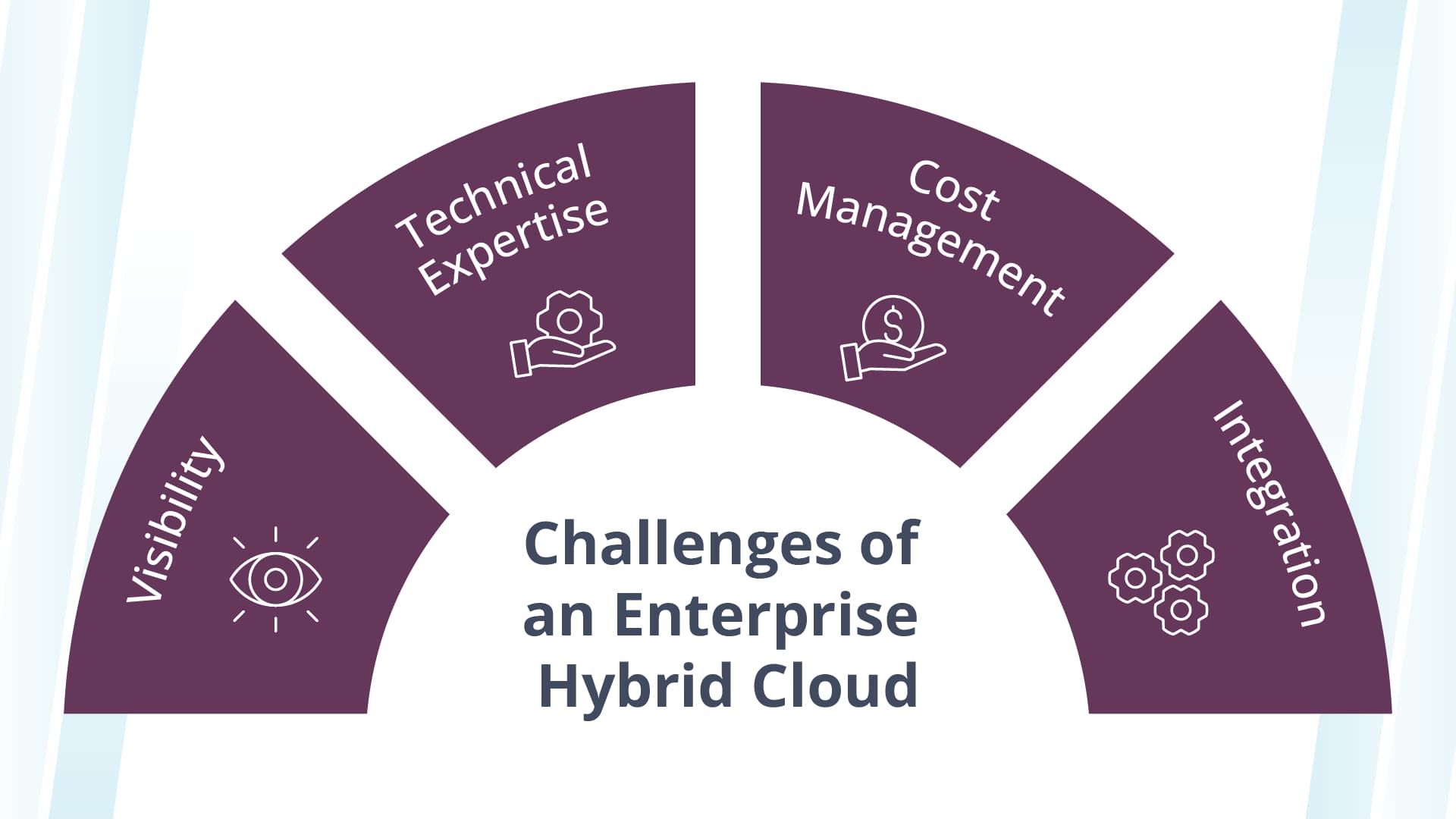
While hybrid cloud environments provide numerous benefits, they also present challenges that organizations must deal with, such as cost management and integration. Let’s discuss these issues in greater detail and see how you can overcome them:
Visibility
One of the biggest challenges of an enterprise hybrid cloud setup is achieving complete visibility and control over your entire infrastructure. It can result in increased operational complexities and make it difficult to identify and troubleshoot problems. For instance, high-latency issues and data transfer bottlenecks can impact a hybrid cloud.
However, a cloud monitoring tool can help you attain a holistic view of operations so you can resolve any issues that may arise, attain high levels of performance, and ensure the smooth operation of your enterprise’s hybrid cloud infrastructure.
Technical expertise
Single-cloud environments can be difficult to deploy and maintain, but hybrid clouds present an even greater challenge. That’s why a hybrid cloud system requires specialized knowledge and expertise, which your internal IT department may not have.
Without the necessary skills, you may run into costly mistakes that result in breaches and potential downtime. And if you opt to invest in training and upskilling programs for existing staff or when onboarding new employees, the costs can quickly add up.
Partnering with a cloud provider like Liquid Web, that can provide guidance and support during migration and beyond, can help. We offer managed cloud services, so you won’t have to worry about the complexities of deploying a hybrid cloud solution. Instead, you can focus on the business side of things, and we’ll handle all the technical details.
Cost management
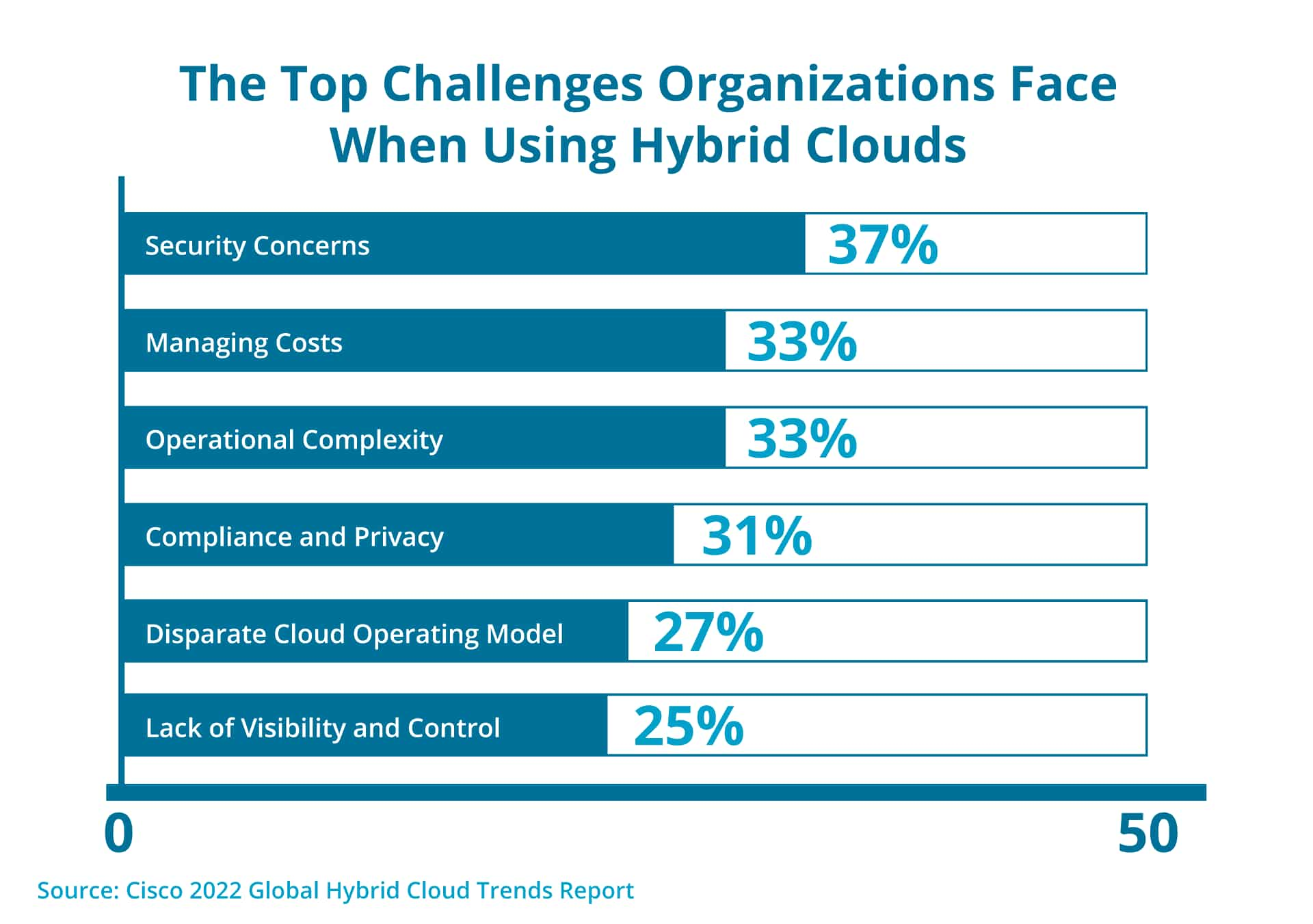
While hybrid clouds offer cost optimization opportunities, managing costs can still pose a challenge. In fact, a Cisco report found that it’s one of the top three challenges organizations face when using multiple clouds.
To overcome this and attain more accurate IT spend forecasting, enterprise organizations should understand the costs associated with managing a hybrid cloud environment.
Moreover, there are several tactics you can use to reduce expenses. These include automating resource management and determining which workloads are better suited for the public cloud and which should be hosted in the private cloud or on-premises data center.
Integration
Hybrid cloud deployments often involve systems with distinct application programming interfaces (APIs), data formats, and network protocols. As such, integrating disparate cloud systems can be a tall order. Integration solutions can help you bridge these differences and enable efficient and effective communication across the hybrid cloud environment.
It’s also worth noting that legacy systems may not be compatible with your new cloud environment. But at Liquid Web, we’ll help you lift and shift your applications and data to the cloud without rewriting code.
Be sure to consider the above challenges and how to address them as you build your hybrid cloud infrastructure.
How to build an enterprise hybrid cloud
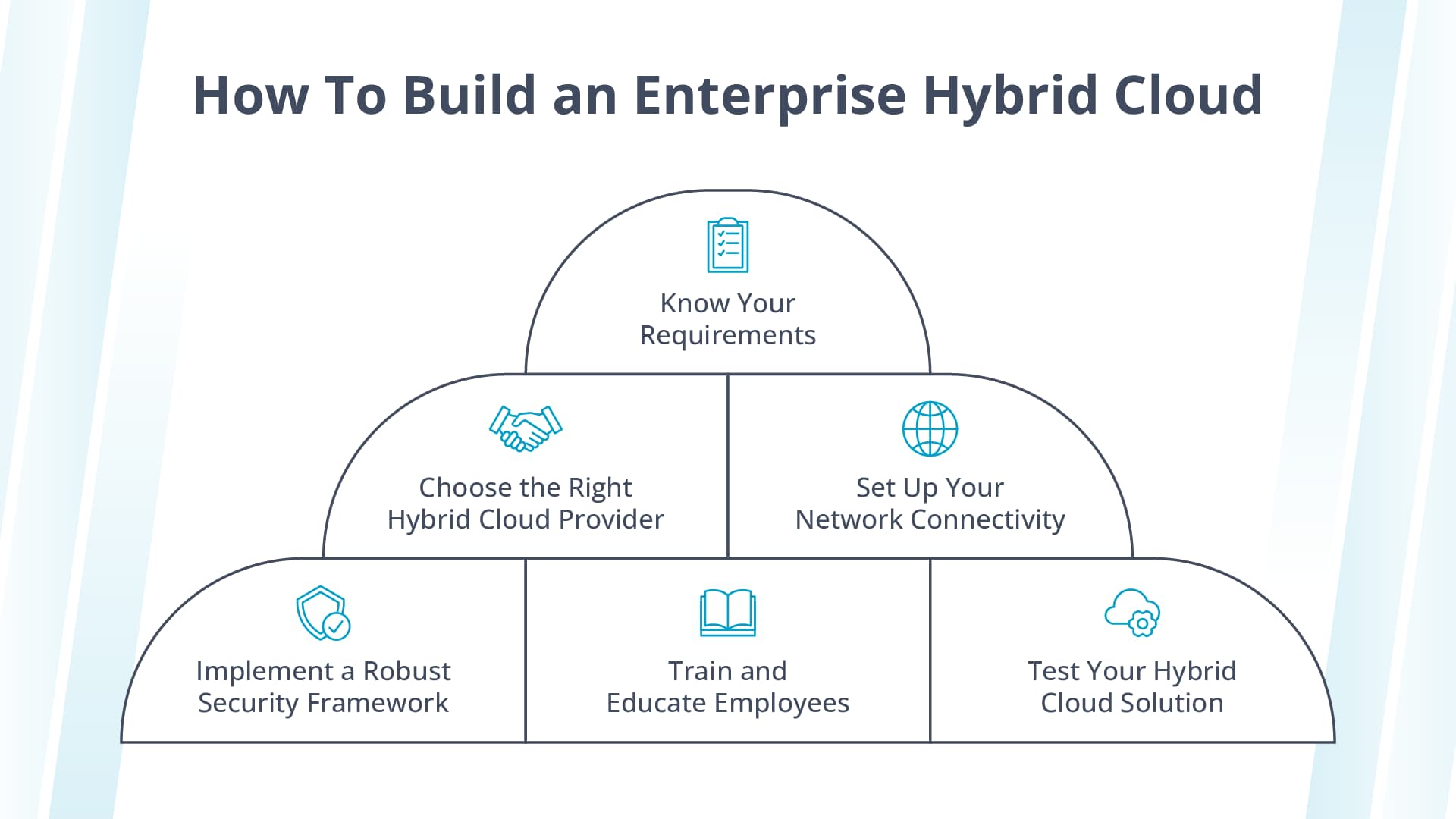
Now that you’re aware of the advantages and challenges of a hybrid cloud configuration let’s go over the steps to implement it:
Know your requirements
When building an enterprise hybrid cloud model, the first step is to identify your requirements. Consider the following questions:
- What are the key goals of transitioning to a hybrid cloud model?
- Which workloads and applications will you move to the new cloud environment?
- How will the hybrid cloud setup meet your compliance requirements?
- Which method will you use to connect the diverse cloud environments?
It’s essential to involve people beyond the IT team when assessing your requirements. For example, they may not have a solid grasp of your business needs, so input from departments like finance and human resources can lead to better decision-making.
Choose the right hybrid cloud provider
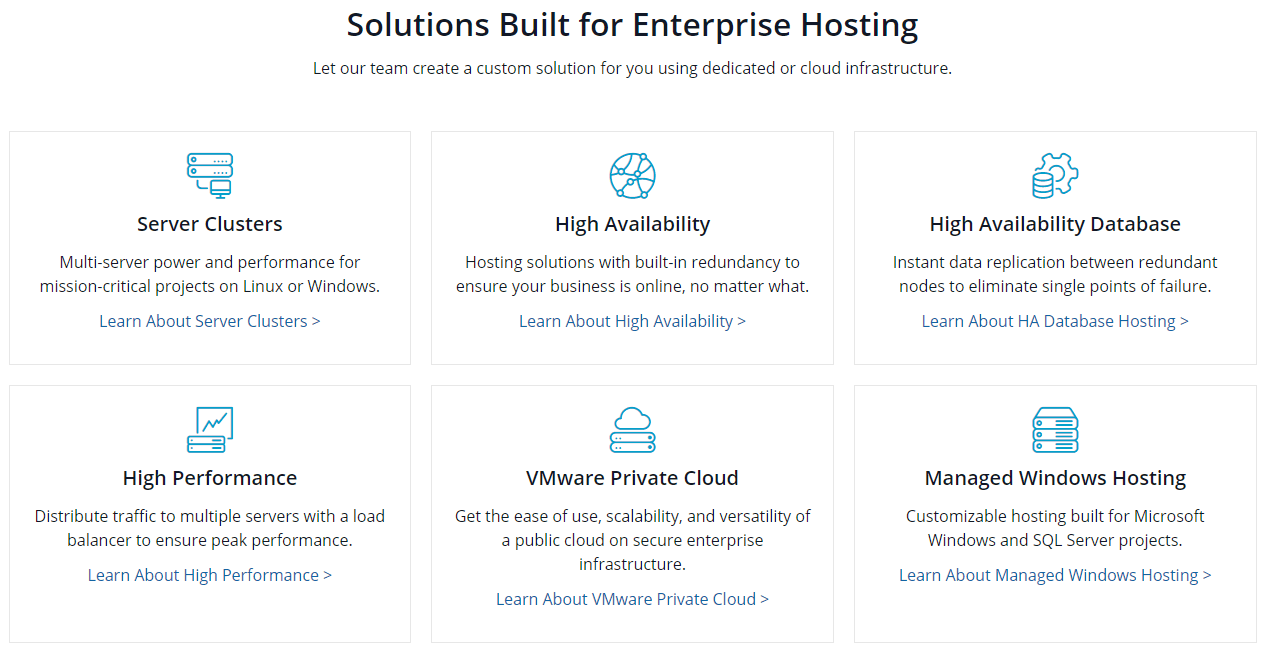
Once you’ve identified your requirements, you need to choose a hybrid cloud provider that can meet those needs.
Ensure the provider is knowledgeable and provides 24/7 support (via multiple channels). In addition, make sure to review the service-level agreement (SLA) with a fine-tooth comb. Take a look at the uptime guarantee and data security measures.
For example, Liquid Web’s SLA guarantees 100% uptime. You can also expect to get help within 59 seconds via phone and live chat.
Also, check if the provider includes any penalties or compensation in the event that these obligations are not met.
Last but not least, ensure your cloud service provider can scale with your business as it grows in size and that it’s compatible with your existing IT infrastructure.
Set up your network connectivity
Connecting hybrid clouds can be achieved through various methods, such as APIs, virtual private networks (VPNs), and wide area networks (WANs). A VPN, for instance, can provide a secure and encrypted connection between your private and public clouds.
Implement security measures
When data is distributed across multiple environments, ensuring its safety and security is no easy feat. And any failures can be costly.
For example, according to a survey by Information Technology Intelligence Consulting (ITIC), 44% of midsized and large enterprises said that just one hour of downtime could cost them over $1 million.
You can protect your data in transit and at rest through encryption. Other security measures you can use include identity and access management and firewalls.
In addition, a backup and disaster recovery strategy should be created to ensure data can be recovered in case of a cyberattack, system failure, or other unforeseen events.
Train and educate employees
As mentioned earlier, integrating and managing diverse cloud environments in an enterprise hybrid cloud requires specialized skills and expertise. Therefore, to ensure that your employees can handle the complexities of a hybrid cloud deployment, provide them with training.
What’s more, creating a culture of continuous learning can be beneficial, as the cloud landscape is constantly evolving.
Test your hybrid cloud solution
Finally, test your hybrid cloud to ensure it works as it should.
While an enterprise hybrid cloud allows you to choose the best environment for your workloads, you should evaluate them regularly to determine if the current placement is the most suitable for achieving the desired results or if a different approach would yield more significant value.
Final thoughts: Enterprise hybrid cloud — what you need to know
By leveraging private and public cloud infrastructure, you won’t limit yourself to just one type of IT environment. Instead, you can get the best of both worlds and the flexibility to choose the most suitable environment for each workload.
If you’re looking for a hosting provider who understands the nuances of both on-premises and cloud environments and can help you implement and manage a secure and reliable enterprise hybrid cloud, check out Liquid Web.
We offer cloud dedicated hosting that includes on-demand flexibility and scalability and fully managed VMware private cloud plans built on enterprise hardware.
Plus, you’ll get 100% network uptime, DDoS protection, and round-the-clock support from our team of experts.
Contact us today to learn more about our reliable solutions.
Related Resources
Trending
Keep up to date with the latest Hosting news.


